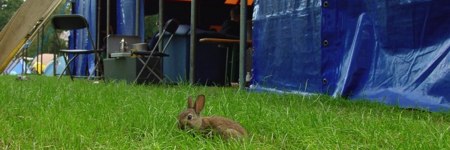
Autoblog dug up this classic mechanical engineering project from 2006. A team of five University of Toledo students constructed a system to help parallel park a car. First, you drive nose first into the space. Hydraulic rams then lower the drive wheel out of the trunk, raising the rear of the car. The single wheel is also hydraulically driven and moves the car into the space. They have a blog documenting the six week build. Have a look at the demonstration video below.















